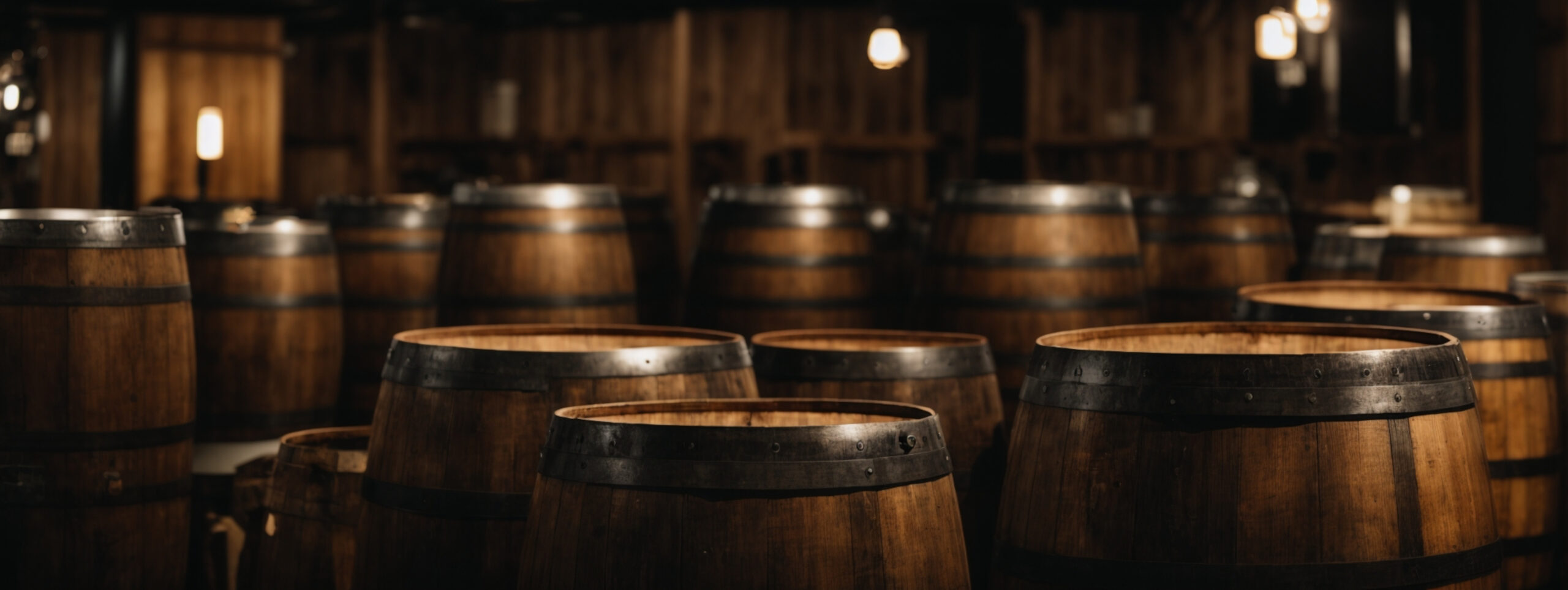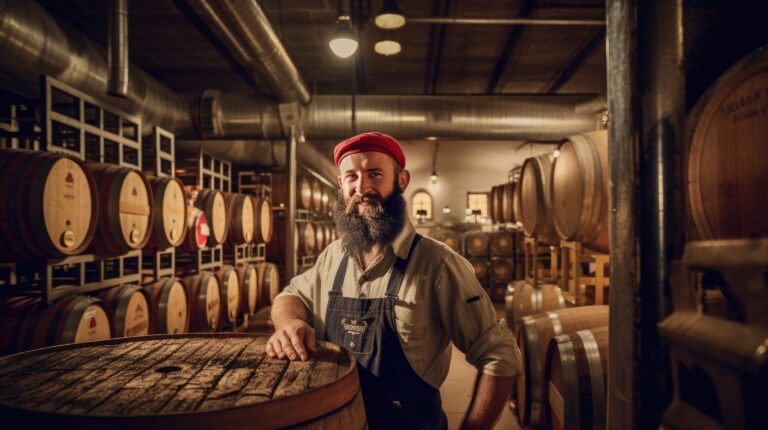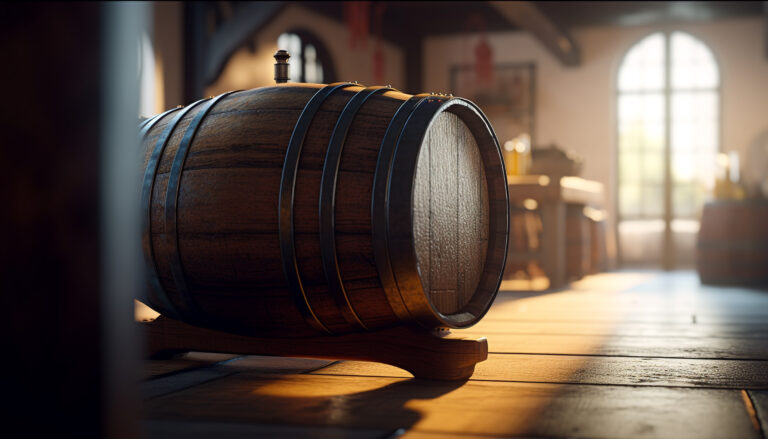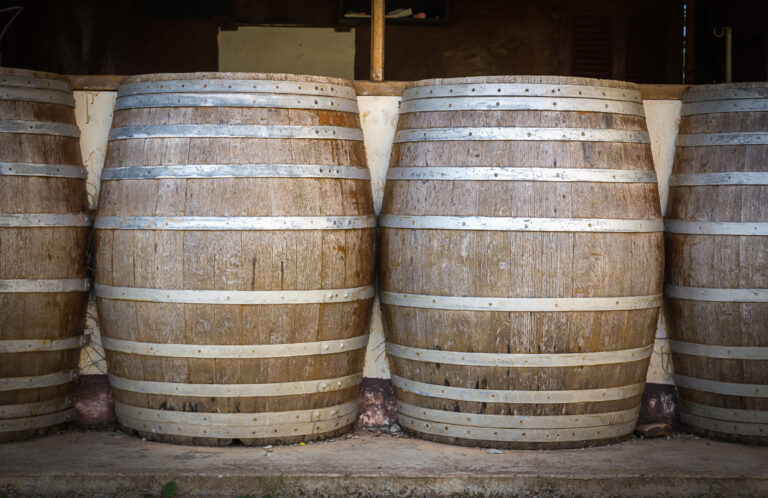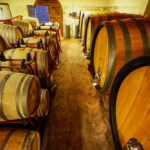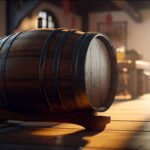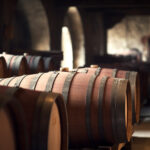Ever wonder what truly makes your favorite whiskey sing with that distinctive flavor and captivating aroma? It’s more than just the dance of grains or the patient aging process. The barrels, the very vessels cradling the spirit, wield immense power in shaping its unique character. You might picture any old wooden container, but these whiskey barrels are far from uniform. Think of them as the secret ingredient, bestowing the majority of the color and up to a whopping 60 percent of the flavor in your beloved whiskey.
A fascinating array of barrel types graces the world of whiskey production, each leaving its indelible mark on the distillate. The most common choices are barrels that once nurtured bourbon, rich sherry, or elegant wine. But the adventurous spirit of some distillers leads them to explore barrels that previously held luscious port, dark rum, or even hearty stout. The possibilities are as boundless as your palate. So, the next time you swirl and inhale the captivating bouquet of your whiskey dram, spare a thought for the barrel where it patiently matured – that’s where the true magic unfolded, creating that signature whiskey flavor.
The Vital Role of Barrel Aging in Whiskey
The barrel stands as the cornerstone in bestowing upon whiskey its characteristic amber hue and those inviting oaky, subtly sweet vanilla-like flavors. Through the transformative process of barrel aging, the whiskey gracefully absorbs compounds from the very wood itself, leading to a mellowing and profound enhancement of its inherent flavor profile.
American white oak barrels reign supreme as the common choice for nurturing whiskey. The very nature of this oak wood, with its porous structure, allows it to naturally impart those delightful notes of vanilla, comforting caramel, and warm spice to the whiskey as time gently passes during aging.
The size of the barrels and their previous life significantly influence the resulting flavor. Pristine, freshly charred oak barrels tend to yield more pronounced wood-derived flavors. In contrast, used barrels, often those with a history of holding bourbon, contribute more nuanced and subtle undertones to the whiskey. Smaller barrels facilitate greater contact between the spirit and the wood, effectively accelerating the aging process and intensifying the flavor.
Even the whims of weather conditions play a role in this intricate dance of aging. Whiskey aged in barrels stored in environments with higher and more fluctuating temperatures experiences a more dynamic interaction with the wood, culminating in bolder and more robust flavors. Conversely, those slumbering in cooler, more stable conditions develop a gentler and more mellow character.
Most whiskeys embark on an aging journey spanning at least 2 to 5 years, though some may rest for decades. As the whiskey matures within its barrel, a natural evaporation occurs at a rate of 2-4% annually, poetically known as the “angel’s share.” This gradual loss in volume paradoxically serves to further concentrate the remaining flavor compounds.
Ultimately, barrel aging is the defining element that shapes the vast majority of whiskey styles. Without this essential step, you’re left with mere distilled spirits – it’s the transformative power of the barrel that elevates it to the cherished status of whiskey. So, the wisdom lies in choosing your barrels thoughtfully!
The Diverse World of Oak Used for Whiskey Barrels
American whiskeys predominantly rely on barrels crafted from American white oak, particularly the species Quercus alba. This specific oak is renowned for imbuing the whiskey with delightful vanilla and subtle coconut flavors as it matures.
Quercus alba
This is the reigning champion, the most prevalent type of oak employed in whiskey barrel production. It thrives across the eastern expanse of the U.S. and into Canada. Whiskeys aged in these barrels tend to exhibit a lighter hue and boast prominent vanilla notes, a hallmark of American whiskey.
Quercus petraea
European oak, also known as Sessile oak, finds its place in the crafting of some American whiskeys, adding a touch of Old World charm. It contributes enticing aromas of warm cinnamon, fragrant clove, and sweet nutmeg. Whiskeys aged in these barrels often showcase a richer, darker color.
Quercus robur
English oak barrels are a rarer sight in the U.S. but can occasionally be encountered. They impart intriguing aromas of dried fruits, reminiscent of plump raisins and sweet prunes. The resulting whiskey also tends to possess a notably dark complexion.
While oak barrels stand as the indispensable vessel for aging whiskey, the precise species of oak chosen remains a closely guarded secret by many master distillers. These artisans meticulously select barrels to orchestrate the precise flavor profile they envision for their whiskey. The synergy of oak barrels, combined with environmental factors like climate and specific distilling techniques, all harmoniously contribute to the creation of a truly unique and exceptional spirit.
American White Oak vs. European Oak: A Tale of Two Woods
American white oak and European oak stand as the two titans in the realm of wood used for aging whiskey. White oak, in particular, holds the esteemed title of the gold standard for crafting bourbon barrels.
American White Oak
Native to the heart of North America, white oak boasts a tight grain structure that allows the whiskey to penetrate deeply into the wood. As the spirit patiently ages, it eagerly soaks up the desirable flavors from the oak, such as sweet vanilla, rich caramel, and warm spice. White oak barrels bestow upon bourbon its distinctive golden-brown color and that characteristic oak flavor that defines it. Remarkably, these barrels can be used for aging multiple times before they are eventually retired as “spent,” finding new life in the maturation of other spirits.
European Oak
European oak, particularly sourced from the forests of Spain and France, presents a more porous structure with a looser grain. Whiskeys aged in these barrels tend to embrace the flavors more rapidly but also experience a higher rate of volume loss due to evaporation. European oak imparts more subtle oak flavors, often hinting at creamy coconut or aromatic clove, and is frequently employed to “finish” or further age whiskeys, adding layers of complexity. Notably, Spanish sherry casks and French wine casks that previously cradled the rich flavors of sherry or fine wine are highly prized for maturing or finishing exquisite single malt Scotch whiskies, contributing unique and nuanced characteristics.
Ultimately, the specific type of oak chosen boils down to the individual distiller’s vision and the precise flavor profile they aspire to achieve in their whiskey. However, when it comes to crafting authentic bourbon, American white oak unequivocally remains the favored choice, essential for bestowing upon the spirit its classic and beloved character. Both types of oak yield exceptional results, ensuring a quality dram regardless of the selection. In the end, it all comes down to personal preference and what delights your palate in a well-crafted whiskey.
How Char Level Impacts Whiskey Flavor: Unlocking the Depths
The level of char meticulously applied to the inside of the barrel exerts a profound influence on the resulting flavor of the whiskey. The char refers to that dark, intentionally burnt layer adorning the inner wood staves of the barrel. As the whiskey matures, a fascinating exchange occurs, with compounds from both the wood and the char being imparted to the spirit, enriching its complexity.
A more intense char translates to a greater abundance of flavor compounds being drawn into the whiskey. The heavier, darker chars tend to contribute prominent notes of sweet vanilla, rich caramel, and warm spice. In contrast, lighter chars impart more delicate and subtle wood-derived flavors. Many distillers opt for a medium char, seeking a harmonious balance between the intensity of flavor and nuanced subtlety.
The type of wood itself also plays a crucial role in this interplay. American oak, the traditional choice for bourbon, tends to impart sweeter flavors, reminiscent of creamy vanilla and buttery caramel. On the other hand, European oak, often favored for Scotch, contributes drier and spicier notes, with intriguing hints of aromatic clove and sweet nutmeg.
The very location of the barrel within the rickhouse, coupled with the natural fluctuations of seasonal temperature changes, causes the whiskey to subtly move in and out of the wood, effectively drawing out and concentrating various flavor compounds. Greater surface area contact with both the wood and the char results in bolder and more robust flavors. Notably, barrels stored in the upper reaches of the rickhouse tend to age more rapidly due to the warmer temperatures, while those nestled lower down experience a slower and more gradual maturation.
Master distillers, with their expert palates, meticulously select and blend barrels exhibiting different char levels, wood types, and maturation conditions to achieve a beautifully balanced and remarkably complex flavor profile. This careful curation leads to award-winning and endlessly interesting whiskeys that consistently surprise and delight discerning whiskey lovers. The often-underestimated influence of the humble barrel truly stands as the secret ingredient behind a great whiskey’s distinctive flavor and captivating aroma.
Used Bourbon Barrels for Finishing Whiskey: A Second Life of Flavor
Used bourbon barrels are not merely discarded after their initial purpose; they play an essential role in both the primary aging and the artful finishing of various whiskeys. These seasoned vessels continue to impart valuable flavor, enticing aroma, and appealing color to the spirit as it further matures.
Oak Barrels: The Timeless Choice
Oak barrels have stood the test of time, serving for centuries as the preferred vessel for aging wines, rich beers, and fine spirits. The very nature of oak contributes natural and inviting flavors, such as smooth vanilla, sweet caramel, and warm toasted nuts. The longer a spirit resides within the barrel, the more pronounced these oak flavors become. Recognizing this enduring quality, many distillers thoughtfully employ used bourbon barrels to impart a final layer of complexity and flavor to their whiskeys through the process of finishing.
Adding Flavor: The Lingering Essence
When bourbon undergoes its aging journey in freshly charred oak barrels, it diligently absorbs a wealth of flavors from the wood. Remarkably, these leftover bourbon-soaked barrels still retain a significant portion of these desirable flavors, which are then gracefully transferred to the whiskey during the finishing stage. As the whiskey rests in these seasoned barrels, it takes on delightful notes of creamy vanilla, rich brown sugar, and warm spices, all a legacy of the bourbon’s previous residence. The ultimate result is a whiskey boasting a remarkably smooth and intriguingly complex flavor profile.
Experimenting with Barrels: A Playground of Palates
Driven by a spirit of innovation, some distillers boldly experiment by utilizing barrels that previously cradled other distinctive spirits. This adventurous approach allows them to create truly unique and captivating flavors in their whiskeys. Port barrels, sherry casks, rum barrels, and even tequila barrels are often employed for the art of finishing whiskey, each contributing its own signature nuances. The possibilities for crafting exciting and unexpected flavor combinations are virtually endless when one embraces the diverse array of used barrels available from spirit production across the globe.
Whether adhering to the time-honored tradition of the used bourbon barrel or venturing into the realm of alternative barrels, the process of maturing and finishing whiskey in wood remains a true art form. Master distillers skillfully blend both spirits and barrels to meticulously craft distinctive, award-winning whiskeys characterized by their intricate aromas and captivating tastes. In this creative endeavor, the humble used barrel stands as the often-unsung secret ingredient that makes such remarkable transformations possible.
Other Cask Types: Sherry, Wine, Rum, Etc. – Expanding the Flavor Spectrum
Beyond the realm of bourbon barrels, a fascinating array of other cask types are frequently employed to age and impart unique flavors to whiskey. Sherry casks, rum casks, wine barrels, and more each contribute their own distinctive character to the distillate during the crucial maturation period.
Sherry Casks: A Symphony of Sweetness and Spice
Initially, sherry casks were adopted simply as an affordable source of barrels. However, distillers soon made a delightful discovery: the luscious sweet sherry flavors permeated the wood, subtly yet significantly flavoring the whiskey within. Today, many distilleries purposefully age specific expressions in sherry casks to produce the highly sought-after “sherried” whiskeys, characterized by their rich flavors of dried fruits, warm nuts, and aromatic spice.
Wine Barrels: Fruity and Tannic Undertones
Similar to sherry casks, wine barrels gracefully pass on their inherent fruity and sometimes subtly tannic qualities to the whiskey. Pinot noir, Cabernet Sauvignon, and other bold red wines are often chosen for this purpose. The residual wood sugars and lingering wine traces within the barrel contribute to whiskeys boasting delightful notes of ripe berries, smooth vanilla, and classic oak.
Rum Casks: A Taste of the Tropics
Rum barrels infuse whiskey with a taste of the tropics, imparting rich molasses and sweet brown sugar flavors. The rum deeply saturates the wood, leaving its indelible mark even after the barrel is emptied. Whiskeys aged in rum casks tend to lean towards the sweeter side, often with enticing hints of ripe banana and creamy coconut.
The strategic use of a diverse range of cask types empowers distillers to craft an impressive array of flavors, allowing them to finely customize their whiskeys and cater to a wide spectrum of palates. While oak barrels remain the fundamental vessel for maturation, the introduction of sherry, wine, and rum casks helps to produce some of the most intriguing and remarkably complex whiskies available. The harmonious mingling of wood and spirits creates a true alchemy, leading to delicious and unforgettable results.
The Perfect Toast: Levels of Charring – Igniting Flavor
The charring level meticulously applied to the inside of the barrel wields a significant influence over the resulting flavor profile of the whiskey. As the barrel undergoes the charring process, it exposes the fresh wood beneath the surface. The whiskey then interacts with this exposed wood, diligently extracting desirable flavors of sweet vanilla, rich caramel, and subtle smoke.
Light Char: A Gentle Kiss of Oak
A light char, sometimes referred to as a toast, gently scorches the inside surface of the barrel. This minimal charring subtly exposes the wood, imparting delicate hints of oak and smooth vanilla into the whiskey. Whiskeys aged in barrels with a light char tend to be characterized by their smooth and mellow nature.
Medium Char: Balancing Act of Flavor
A medium char penetrates deeper into the wood, resulting in a more pronounced presence of oak, sweet caramel, and warm spice notes in the whiskey. Whiskeys matured in medium-charred barrels strike a harmonious balance between the robust oakiness of a heavy char and the gentle smoothness of a light char, offering a versatile and appealing flavor profile.
Heavy Char: Embracing Boldness and Smoke
A heavy char, often dramatically referred to as an alligator char due to its cracked appearance, deeply penetrates the wood structure. This intense charring imparts robust flavors of strong oak, noticeable smoke, and even a hint of charcoal into the whiskey. Whiskeys aged in heavily charred barrels tend to be bold, smoky, and frequently described as having a distinct burnt or charry character, appealing to those who appreciate a more intense experience.
Ultimately, the preferred level of charring comes down to individual taste and the desired flavor profile. Whether you appreciate subtle hints of oak or the bold intensity of smoky charcoal, the careful charring of barrels at varying intensities empowers whiskey makers to craft a diverse range of distinctive and captivating flavors. The next time you savor a glass of whiskey, take a moment to consider how the level of char might have contributed to its unique flavor and enticing aroma.
Unique Whiskey Barrel Finishes: Adding Layers of Complexity
The innovative use of unique whiskey barrel finishes allows distillers to impart distinctive and unexpected flavors to the aging spirit, adding fascinating layers of complexity to the final product. These special barrels have previously held other alcoholic beverages or even flavorful ingredients, absorbing residual flavors that are then gracefully transferred to the whiskey during its final stages of maturation.
Port and Sherry Barrels: Dried Fruits and Spice
Whiskeys finished in used port or sherry barrels take on delightful notes of dried fruits, such as sweet raisins and succulent figs, often accompanied by warm nutty and aromatic spicy undertones. The fortified wines previously aged in these barrels leave behind subtle residual sugars that contribute to the unique character of the whiskey. Popular examples that showcase this finishing technique include the rich Glenmorangie Quinta Ruban and the elegantly sweet The Balvenie PortWood.
Rum Barrels: Tropical Sweetness
Rum barrels infuse whiskey with a taste of the tropics, imparting rich molasses-like flavors and hints of brown sugar. The rum deeply permeates the wood, leaving behind enticing notes of ripe banana and creamy coconut. Whiskeys aged in rum barrels tend to exhibit a sweeter profile, offering a delightful departure from traditional whiskey flavors. Notable examples include the Glenfiddich 21 Year Old Rum Cask Finish and the smooth Crown Royal XR.
Wine Barrels: Fruity Elegance
Both red and white wine barrels are thoughtfully employed to finish whiskies, contributing vibrant fruit-forward flavors. Whiskeys finished in red wine barrels may develop enticing notes of dark black cherry, juicy plum, and rich cocoa, while those finished in white wine barrels often exhibit bright citrus and delicate stone fruit aromas. Popular whiskies showcasing this elegant finish include the Glenlivet Nàdurra and the refined Auchentoshan Three Wood.
Other Unique Barrels: A World of Flavor Exploration
Driven by a passion for innovation, some distilleries venture even further, experimenting with barrels that once held madeira, sauternes, or muscat wine, adding an extra layer of intriguing complexity to their whiskies. Even barrels that previously contained rich maple syrup, robust bourbon, or creamy stout beer are being utilized, resulting in whiskies with truly distinctive and memorable flavor profiles. Whisky makers are continually pushing the boundaries of tradition, striving to produce unique and unforgettable tasting experiences for discerning whiskey connoisseurs.
What Barrels Are Used for Whiskey: FAQs – Unveiling the Details
What types of barrels are used for aging whiskey?
The most common types of barrels used for aging whiskey include:
- Oak barrels: Oak stands as the undisputed wood of choice for aging whiskey. Oak barrels gracefully impart flavors of smooth vanilla and sweet caramel as the whiskey absorbs the natural compounds from the wood during its maturation.
- Charred barrels: Before being filled with the new spirit, barrels undergo a charring or toasting process on their interior. This crucial step helps to impart both flavor and appealing color to the whiskey. The specific level of char directly influences the intensity and type of flavor that is extracted.
- Bourbon barrels: By legal requirement, authentic bourbon must be aged in brand new, freshly charred oak barrels. Following their service in maturing bourbon, these barrels, still rich with oak and vanilla flavor, are frequently repurposed to age other styles of whiskies, adding a touch of their previous life.
- Sherry barrels: Certain whiskies, particularly distinguished single malts, are aged in used sherry barrels. These seasoned barrels contribute delightful nutty and dried fruit flavors to the maturing spirit, adding a layer of rich complexity.
- Port barrels: Similar to sherry barrels, used port barrels are also selectively employed to age specific whiskies. They impart luscious berry flavors and often contribute a beautiful ruby hue to the final product.
- Rum barrels: In a departure from tradition, rum barrels are sometimes utilized to age whiskies, especially in regions outside the traditional whisky-producing areas. These barrels infuse the whiskey with tropical notes of ripe banana, creamy coconut, and rich molasses.
The specific type of barrel chosen for maturation exerts a profound influence on a whiskey’s aroma, intricate flavor, and inviting color. Master distillers, with their deep understanding of wood and spirit, meticulously select barrels to craft the precise flavor profile they envision for their whiskies. The entire aging process is truly a harmonious blend of both art and scientific precision!
Final Thoughts: A Toast to the Barrel
So there you have it – a captivating journey through the diverse world of barrels used to age whiskey and impart its remarkable array of flavors. The next time you find yourself savoring a well-aged whiskey, whether it be a robust bourbon or a nuanced Scotch, take a moment to appreciate just how much of that delightful taste originates from the very wood that cradled it. These barrels are far more than mere storage vessels for aging; they stand as a fundamental and indispensable ingredient in the creation of this beloved spirit.
You are now privy to the secret – these remarkable barrels are the unsung heroes responsible for the smooth and complex flavors you’ve come to know and cherish in your favorite whiskey. Take a moment to appreciate the deep craftsmanship and time-honored traditions that go into the making of these essential barrels. And above all, appreciate the transformative power they hold, turning raw distillate into a true work of art for the senses. Ultimately, the barrels play an undeniable role in making whiskey the exceptional drink to be savored and enjoyed.
